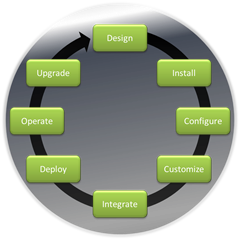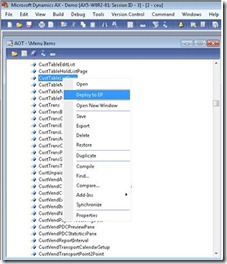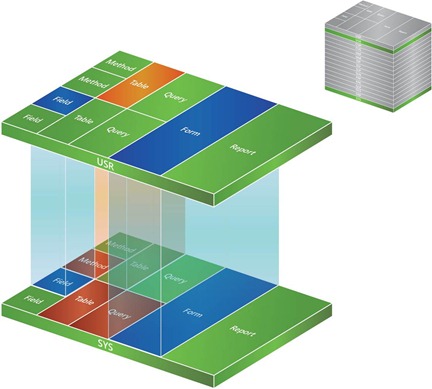The Benefits of a Model Driven Layered Architecture
The previous post introduced some key architectural advances that turn Microsoft Dynamics AX 2012 into a new generation of ERP that delivers new level of capabilities, unmatched agility and a compelling and empowering user experience.
In this post I would like to spend a bit more time on the customer benefits of our Model Driven Layered Architecture (MDLA) which got introduced in the previous post. Although this architecture at first sight might seem beneficial for developers, there are some clear customer benefits to this architecture.
Acceleration of application development -
MDLA will help accelerate the application development process for our partners and customers, write less code and enabling them to deliver the solution more quickly. It all starts with the concepts of a ‘model’. A ‘model’ is defined as a set of elements (eg. forms, tables, queries, methods, fields) captured in metadata and stored in a specific layer of the ‘model store’. The ‘model store’ is the central repository that contains the models within the SQL database. It enables declarative programming based of the metadata of the elements in the models.
An example of the power of declarative programming: Microsoft Dynamics AX 2012 enables 'list pages' – an important vehicle for accessing system data – to be defined completely declaratively, with a single model covering delivery of those pages on both rich client as well as a portal experiences. This means that the portal experience can be generated automatically with 1 single mouse click vs. having to code complex ASP pages manually to reflect the same experience in the portal.
Beyond pages, models are used to define data, processes and policies all through metadata – reduce the need for complex coding and accelerating development of solution that meet customer or vertical specific needs.
Higher quality solutions that meets customer unique needs -
Layering' in the model store allows for support of a base model, extended with models for localization, industry specialization, and on top of that can incorporate ISV (vertical) specialization as well as reseller specialization and customer specific customization. Although these models are separated through the layer structure, they are contain within one model store and are executed as one solution at runtime.
This ordered structure of all elements in 'layers' makes company-differentiating changes easy to execute, as more and more of the system is defined through models and unique requirements can be addressed declaratively without writing actual code.
In addition, the metadata is stored in the SQL Server database, enabled both MorphX as well as Microsoft Visual Studio to be used as IDE by developers, both working of the same model store. The interoperability with Visual Studio also includes utilizing Team Foundation Server to more effectively manage the software develop projects through their lifecycle, improving the quality of the solutions developed.
Simplify the application lifecycle -
Key to keeping the ownership cost of an ERP system low is a continued focus on improving and simplifying the application life cycle of the ERP application, from system design, installation, configuration up to operation and upgrade. A clear separation system of different 'parts' of the solution (e.g. core functionality, 3rd party ISV solutions and, customizations ) through layers of the model store, the ability to host multiple models into one layer, allows for easier deployment and upgrade for the complete Microsoft Dynamics AX ERP solution.
cycle of the ERP application, from system design, installation, configuration up to operation and upgrade. A clear separation system of different 'parts' of the solution (e.g. core functionality, 3rd party ISV solutions and, customizations ) through layers of the model store, the ability to host multiple models into one layer, allows for easier deployment and upgrade for the complete Microsoft Dynamics AX ERP solution.
Some examples of our continued focus on simplifying the application lifecycle : in this release we’ve enabled a capability in the architecture called ‘fine grained metadata’. This new capability provides the ability to model very granular changes to components within an entity (eg. a form) and effectively manage the application deployment lifecycle from ISV building a specific solution extension through to customer deploying, managing as well as upgrading the entire solution.
In addition, we've introduced a new ISV licensing framework. This new licensing framework not only improve the IP protection for 3rd party developers, but more importantly customers will benefit from more repeatable, higher quality standard solutions that are more easily to deploy.
These clear customer benefits brought together in our Model Driven Layered Architecture (MDLA) help enable more powerful solutions – allowing for more rapid solution development at a higher quality bar and a at lower ownership cost for our customers!
/Kees

